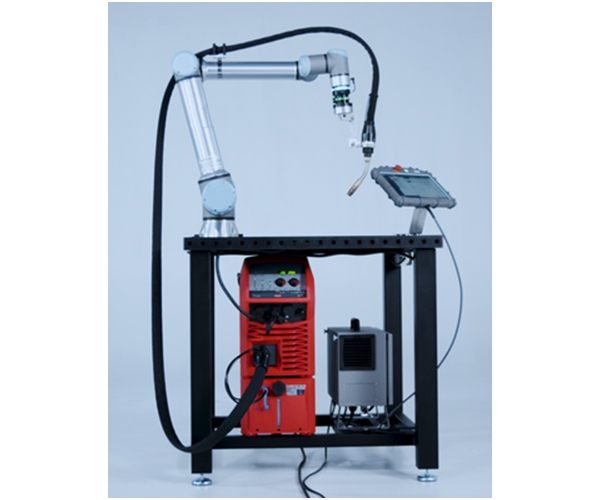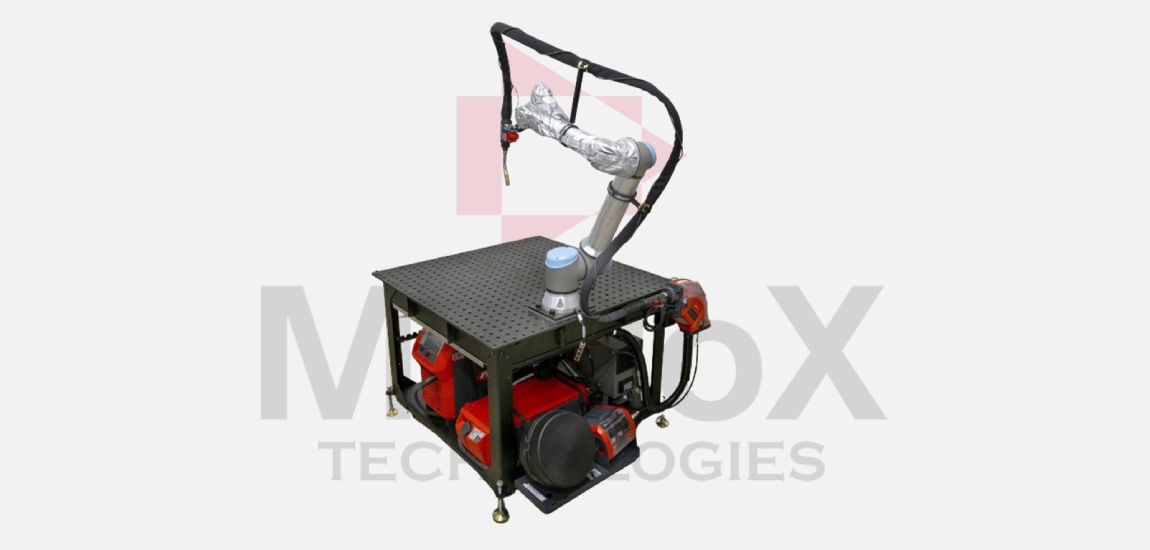
These systems are designed to work alongside human operators in a shared workspace, combining the precision and repeatability of robotic welding with the flexibility and adaptability of human workers. The robot can be mounted on a welding table, cart, or magnetic mount, depending on the specific application.Welding Cobots offer the same accuracy and repeatability like normal robots while adding easy programming, the ability to work closely with your welding processes, and the industry’s most advanced cobot technology,
Our welding systems are flexible, quick to deploy, straightforward for your welders to program, and customizable to meet the specific needs of your business. There are many advantages of using a robotic welding tool at your shop, including:
Increased Safety: Collaborative robots are designed to work alongside humans safely. By implementing Cobot welding systems, the risk of accidents and injuries in the welding environment is reduced as robots can handle repetitive or hazardous tasks, allowing human workers to focus on more complex or supervisory roles.
Improved Efficiency: Cobot welding systems can work continuously without the need for breaks, leading to higher productivity levels. Additionally, robots can perform tasks with consistent precision, better speed and accuracy, resulting in higher-quality welds and reduced rework.
Flexibility and Adaptability: Collaborative robots are easily programmable and can be quickly reconfigured to handle different welding tasks or adapt to changes in production requirements. This flexibility enables manufacturers to respond promptly to fluctuations in demand and production needs.
Space Optimization: Cobots are typically compact and can be integrated into existing manufacturing setups without requiring significant floor space. This allows manufacturers to maximize their workspace and optimize production layouts.
Cost Savings: While the initial investment in cobot welding systems may be higher than traditional welding equipment, the long-term cost savings can be substantial. By increasing productivity, reducing errors, and minimizing downtime, cobot welding systems can deliver a significant return on investment over time.
Skill Enhancement: Cobot welding systems can supplement the skills of human welders by automating repetitive tasks, allowing workers to focus on more intricate aspects of the welding process, such as quality control or programming the robots. This can lead to skill enhancement and professional development opportunities for human workers.
Overall, cobot welding offers a compelling combination of safety, efficiency, flexibility, and cost-effectiveness, making it an attractive option for manufacturers looking to optimize their welding operations.
